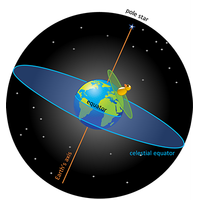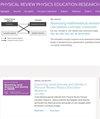调查学生在观看有关太阳和恒星视运动的天象仪演示后的见解
IF 2.6
2区 教育学
Q1 EDUCATION & EDUCATIONAL RESEARCH
Physical Review Physics Education Research
Pub Date : 2024-05-13
DOI:10.1103/physrevphyseducres.20.010141
引用次数: 0
摘要
我们介绍了两项研究,旨在调查观看天文馆演示能在多大程度上提高中学生对太阳和恒星视运动的理解。在第一项研究中,我们使用了太阳和恒星的视运动(AMoSS)测试,通过前测/后测/保留测试的方式,测量了404名学生(16至17岁)在布鲁塞尔天文馆观看经典天文馆演示后的学习收获和洞察力提高情况。AMoSS 测试是一份关于每日和每年的视运动以及观测者位置的问卷。它包括六道有关太阳的选择题和六道有关恒星的类似选择题。我们要求学生解释他们的选择。学生的学习收获相当小,而且在太阳问题上比在恒星问题上得分提高得更多。这种差异在有关年视运动的问题上最大。我们发现,这是由于许多学生将有关太阳的知识照搬到了恒星上。根据调查结果,我们开发了一个新的天象仪演示,特别注意天球模型的使用。我们还开发了一个学习模块,让学校的学生为这一天文馆演示做好准备。在第二项研究中,我们测量了 339 名学生(也是 16 至 17 岁的学生)在观看新的天文馆演示后的学习收获。一些学校小组在学校学习过预备学习模块,另一些则没有。我们发现,由于每年的视运动问题得分较高,在星体问题上的学习收获明显高于第一次研究。在这方面,值得注意的是,我们没有看到在学校准备了演示文稿的学生和没有准备演示文稿的学生之间存在显著差异。在第二次研究中,参加天文馆演示或通过学习模块后正确回答所有问题的学生人数有所增加,但只有那些在学校通过学习模块的学生才有显著差异。本文章由计算机程序翻译,如有差异,请以英文原文为准。

Investigating students’ insight after attending a planetarium presentation about the apparent motion of the Sun and stars
We present two studies to investigate the extent to which attending a planetarium presentation increases secondary school students’ understanding of the apparent motion of the Sun and stars. In the first study, we used the Apparent Motion of Sun and Stars (AMoSS) test in a pretest/post-test/retention test setting to measure learning gains and improved insight of 404 students (16- to 17-year-olds) after attending a classical planetarium presentation at the Brussels Planetarium. The AMoSS test is a questionnaire on the daily and yearly apparent motion and the observer’s position. It consists of six multiple-choice questions about the Sun and six similar multiple-choice questions about the stars. We asked the students to explain their choices. The learning gains are rather small and the scores improve more on the Sun questions than on the star questions. This difference is largest for questions about the yearly apparent motion. We found that this is due to the fact that many students copy their knowledge about the Sun to the stars. Based on the results of this survey, we developed a new planetarium presentation with particular attention to the use of the celestial sphere model. We also developed a learning module that prepares students at school for this planetarium presentation. In a second study, we measured the learning gains after attending this new planetarium presentation among 339 students, also 16- to 17-year-olds. Some school groups had worked through the preparatory learning module at school and others had not. We find that the learning gains on the star questions are significantly higher than in the first study, due to better scores on the yearly apparent motion questions. In this regard, it is notable that we do not see significant differences between those students who prepared the presentation at school and those who did not. In the second study, the number of students who answer all questions correctly after attending the planetarium presentation or working through the learning module increases, but only significantly for those students who worked through the learning module at school.
求助全文
通过发布文献求助,成功后即可免费获取论文全文。
去求助
来源期刊

Physical Review Physics Education Research
Social Sciences-Education
CiteScore
5.70
自引率
41.90%
发文量
84
审稿时长
32 weeks
期刊介绍:
PRPER covers all educational levels, from elementary through graduate education. All topics in experimental and theoretical physics education research are accepted, including, but not limited to:
Educational policy
Instructional strategies, and materials development
Research methodology
Epistemology, attitudes, and beliefs
Learning environment
Scientific reasoning and problem solving
Diversity and inclusion
Learning theory
Student participation
Faculty and teacher professional development
 求助内容:
求助内容: 应助结果提醒方式:
应助结果提醒方式:


